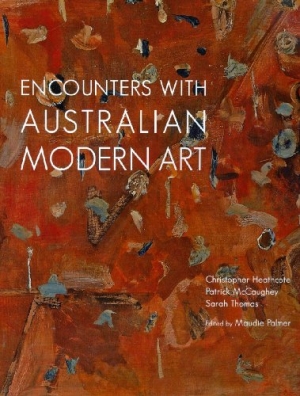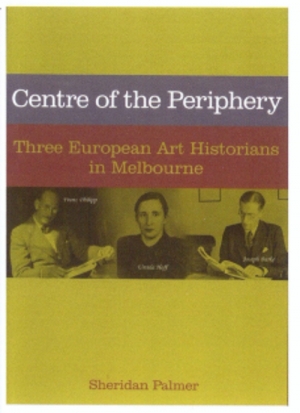Patrick McCaughey
Letters to the Editor - July-August 2011
Wednesday, 29 June 2011
Paradoxical neglect
Dear Editor,
Patrick McCaughey’s article ‘NativeGrounds and Foreign Fields: The Paradoxical Neglect of Australian Art Abroad’ (June 2011) caught my attention because of its title, then its content. The ...
'The paradoxical neglect of Australian art abroad' by Patrick McCaughey
Twenty years ago, when I was at the Wadsworth Atheneum in Hartford, I heard of an Arthur Boyd exhibition in SoHo. Recklessly, without seeing the show, I urged my American friends to see one of Australia’s foremost contemporary painters. The gallery, unknown to me, turned out to be small and unimpressive. There were five or six late paintings, including one of those large, multi-figured bathers, with that disconcerting quality of Boyd at the end of his career, both slapdash and commercial at the same moment. ‘So this is what contemporary Australian painting looks like?’ my companion asked ironically, just within the bounds of good manners.
... (read more)Patrick McCaughey reviews 'I Blame Duchamp: My Life’s adventures in art' by Edmund Capon
Over the past three decades, Edmund Capon has transformed the Art Gallery of New South Wales. Before he arrived, you could have swapped the contents of the Sydney gallery with Ballarat’s and nobody would have noticed the difference. How a city of that size, wealth and international ambition could have wound up with such a provincial collection puzzled the mind. No more. Capon has thrown out new wings, created a distinguished Asian collection virtually ex nihilo, attracted the generous benefaction of some remarkable old master paintings from James Fairfax, and acquired major twentieth-century and contemporary works. As importantly, he has made the AGNSW the liveliest of the state galleries. Even a wet Tuesday morning sees the central court thronged. Often Capon installs a medley of works there which would look inchoate in most other galleries but which emerge as resounding and triumphant. I once saw the big Kirchner Three bathers hung with the august Max Beckmann’s Mother and daughter and Picasso’s crackling Seated nude from the mid 1950s. Collectively, they gave off the whack and weight of modernity more excitingly than any other display in Australia.
... (read more)Patrick McCaughey reviews 'Crossing Cultures: Conflict, migration and convergence. The proceedings of the 32nd International congress of the History of Art' edited by Jaynie Anderson
The discipline of art history in Australia has passed through four stages. The foundations were laid in the 1940s with the arrival of three eminent émigrés. Ursula Hoff, schooled in the rigours and erudition of the Warburg Institute, came first. Franz Philipp, a Dunera survivor, well educated in the Viennese School, under Julius von Schlosser and others, came next. Then came Joseph Burke, first Herald Professor of Fine Arts at the University of Melbourne, and a product of the Courtauld Institute in London and the Anglophiliacs of Yale. Hoff would become the first trained art historian to work in a public Australian art gallery. Over the years, she made the Prints and Drawings Room at the National Gallery of Victoria a powerhouse of scholarship and connoisseurship. Burke and Philipp joined forces to create the Department of Fine Arts. Burke modestly proclaimed that ‘Franz was the architect and I was the builder’; I suspect that Philipp felt he was both.
... (read more)DIAMETRIC OPPOSITES
Dear Editor,
I concur with Daniel Thomas’s high opinion of the collection of Eva and Marc Besen and of their TarraWarra Museum, and share his admiration of the essays by Christopher Heathcote and Sarah Thomas in his review of Encounters with Australian Modern Art (February 2009).
...Daniel Thomas reviews 'Encounters with Australian Modern Art' by Christopher Heathcote, Patrick McCaughey and Sarah Thomas
Eva Gandel and Marc Besen Married in Melbourne in 1950 and soon began collecting current art. After the closure of John Reed’s privately established but short-lived ‘Museum of Modern Art & Design of Australia’, they bought a few of its de-accessioned possessions, paintings by John Perceval and Sidney Nolan. In the 1970s they added works by recentlydeceased Sydney artists William Dobell, Ralph Balson, and Tony Tuckson. These were perceived ‘gaps’ in a collection of recent Australian art. Perhaps the systematic history of Australian art then profusely displayed in the private collection formed by their relative Joseph Brown, and first published in 1974 as Outlines of Australian Art, had inspired the Besens to be more systematic. Hitherto, they had mostly encountered local work by living artists.
... (read more)Jaynie Anderson, the third Herald Professor of Fine Arts at the University of Melbourne, initiated the study of Australian art historiography with fine accounts of the three scholars – Ursula Hoff, Franz Philipp and Joseph Burke – who form the focus of this book. Surprisingly, Professor Anderson’s contributions are barely mentioned, and she is not listed among the fifty-five people Sheridan Palmer has consulted. Some published memoirs of past students of Philipp and Burke go unmentioned in the text and are omitted from the bibliography. None of this encourages.
... (read more)Dennis Altman
In any given year we will read but a tiny handful of potential ‘best books’, so this is no more than a personal selection. Here are two novels that stand out: Stephen Eldred-Grigg’s Shanghai Boy (Vintage) and Hari Kunzru’s Tranmission (Penguin). Both speak of the confusion of identity and emotions caused by rapid displacement across the world. The first is the account of a middle-aged New Zealand teacher who falls disastrously in love while teaching in Shanghai. Transmission takes a naïve young Indian computer programmer to the United States, with remarkable consequences. From a number of political books, let me select two, both from my own publisher, Scribe, which offers, I regret, no kickbacks. One is George Megalogenis’s The Longest Decade; the other, James Carroll’s House of War. Together they provide a depressing but challenging backdrop to understanding the current impasse of the Bush–Howard administrations in Iraq.
... (read more)A book of letters between ‘Bert’ and ‘Ned’ resonates nicely with the famous letters of Smike to Bulldog, published in 1946, the year young Albert Tucker completed his first images of Modern Evil, and Sidney Nolan began his first Ned Kelly paintings. The fascination of this correspondence, between artists destined to be as famous for their period as Arthur Streeton and Tom Roberts for theirs, is that it shows them flirting. ‘Bert’ tries to be graceful, ‘Ned’ to be scrupulous; both with an eye to history.
... (read more)Vivien Gaston reviews 'Voyage and Landfall: The Art of Jan Senbergs' by Patrick McCaughey
Jan Senbergs’ art is not easy to like. Sombre, brutal, austere in colour, it nevertheless represents one of the most sustained meditations on the industrial landscape in Australian art. Patrick McCaughey, well-known gallery director, academic and critic, has written about the artist and his work in a way that deliberately blurs biography, autobiography and visual critique. The result is an engaging and unusually meticulous account of the evolution of an artistic career, documenting the emergence of ‘Senbergs country’ as a force in the Australian aesthetic imagination.
... (read more)





